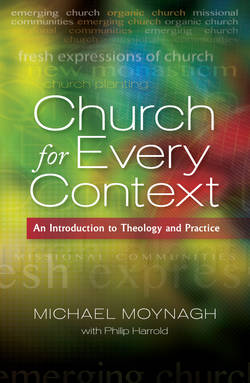Читать книгу Church for Every Context - Michael Moynagh - Страница 103
На сайте Литреса книга снята с продажи.
Conclusion
ОглавлениеSome people, such as Andrew Davison and Alison Milbank (2010), believe that there is no need for new types of church. At its best, inherited church is well engaged with local communities. Clergy are known in schools, youth centres and by the police. They coordinate the local response to racism, lobby about the drains and support local voluntary groups. They encourage the laity to be involved in residents associations, local politics and in the pub darts team. The church meets people at times of crisis and celebration. Evangelism often permeates all these activities.
If this was the whole story, there would be no need to explain the church’s decline in much of the global North. Secularization theory exists because the church has contracted. This shrinkage questions any claim that the existing church alone can meet today’s missional challenge. As society disengages further from the church, why should more of the same solve a problem that was created by more of the same? The church needs to adapt.
Against many of the secularization writers, however, it is premature to pen the church’s obituary. Decline seems to stem from the church’s own limitations. With the fragmentation of life, the church has failed to accompany people into the numerous settings where they now live. It has become detached from their concerns, failed to open sufficient doors to newcomers and persisted with an ecclesial model that is self-defeating. The birthing, still at an early stage, of contextual churches in the splinters of society could herald a church that serves people in the ordinary settings of life, and becomes significant to them once again.
To serve these contexts well, new churches will need to connect with expressive selves who lead immanent lives, have a desire to be good, are increasingly sociable and, if they are interested in spirituality at all, prefer it in the form of a quest. Churches will be supportive communities that engage with practical, everyday concerns, respond to ethical desires, connect transcendence more tightly to day-to-day realities and provide a welcoming environment in which individuals can tread their spiritual paths. Churches that do this will be in tune with the network society. They will be focused, serving specific groups of people, but also be networked, pooling resources for mission and discipleship. They will be emergent, displaying the self-organizing properties of networks that now shape society.
All this describes some of the potential contours of church in every context – church in the different settings of life, church that enriches everyday existence in life and church that is responsive to the dynamics of network life. Yet if contextual church is a plausible response to today’s cultural landscape, what are its theological foundations? It is to this question that we now turn.
